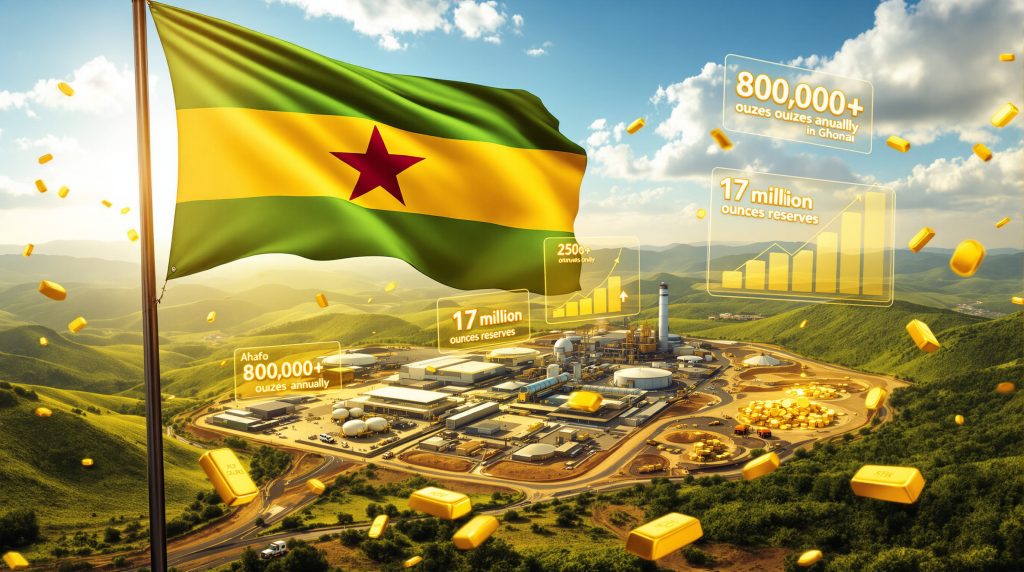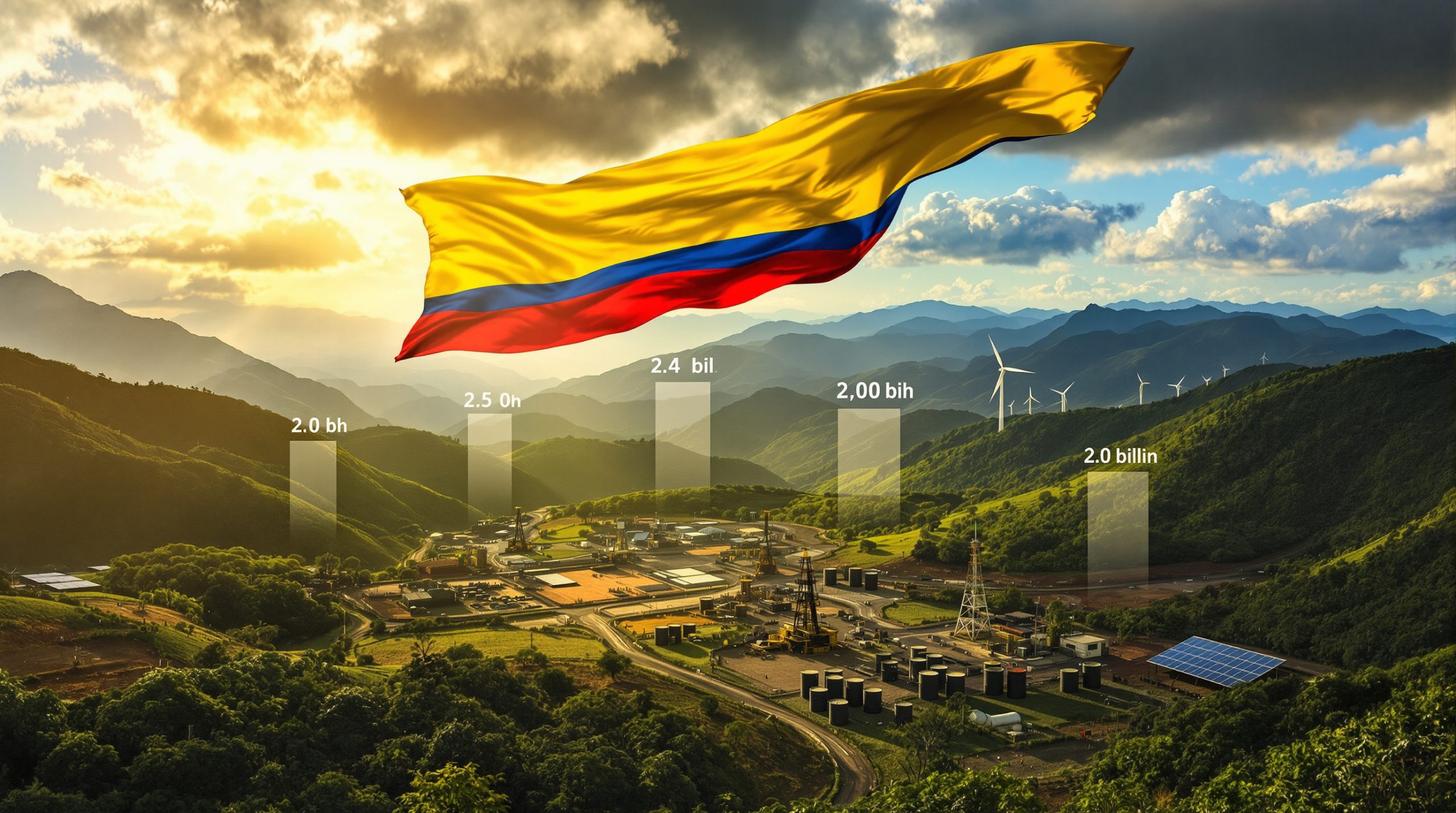Ghana's Position as Africa's Leading Gold Producer
Ghana continues to dominate Africa's gold mining landscape, maintaining its position as the continent's premier gold-producing nation. The West African country has established itself as a cornerstone of global gold supply chains, attracting billions in foreign investment across multiple mining regions. The Newmont Ghana gold mine represents a significant component of this success story, demonstrating the country's ability to attract and maintain large-scale mining operations.
The nation's mining sector benefits from a unique combination of geological advantages and regulatory stability that sets it apart from neighbouring countries. This strategic positioning has enabled Ghana to maintain consistent production levels while attracting sustained international investment from major mining corporations.
Ghana's regulatory framework provides the foundation for long-term mining operations through comprehensive stability agreements that lock in fiscal terms for extended periods. These arrangements offer multinational corporations the predictable cost structures essential for major capital allocation decisions in the extractive industries.
What Makes Newmont's Ahafo Complex a Strategic Asset?
Location and Infrastructure Advantages
The Ahafo mining complex represents a concentrated mining strategy spanning Ghana's mineral-rich regions. The newly commissioned Ahafo North facility sits strategically positioned just 30 kilometres from the established Ahafo South operation, creating operational synergies and logistical efficiencies that maximise resource extraction potential across varying geological conditions.
This dual-site approach enables Newmont to optimise processing capabilities while maintaining operational flexibility across different ore grades and mining conditions. The proximity of the two facilities allows for shared infrastructure, technical expertise, and operational best practices that enhance overall complex performance.
Production Capacity and Employment Generation
The combined Ahafo complex demonstrates substantial production capacity, with Newmont Ghana gold mine operations producing approximately 800,000 ounces of gold in 2024. The new Ahafo North facility is expected to contribute significantly to this output, with production targets ramping from 50,000 ounces in its inaugural year to between 275,000 and 325,000 ounces annually over its projected 13-year operational life.
Employment generation represents a critical component of the complex's strategic value, with the Ahafo North mine alone expected to employ approximately 1,000 permanent workers. This employment creation supports local economic development and skills transfer initiatives that extend well beyond the immediate mining operations.
How Does the $900 Million Ahafo North Investment Transform Operations?
Phased Development Strategy
The $900 million Ahafo North investment represents a carefully orchestrated development approach designed to optimise long-term production while minimising operational risks during the initial commissioning phase. Furthermore, the facility commenced operations with conservative output targets of 50,000 ounces during 2025, allowing technical teams to test processing systems and refine extraction methodologies before scaling to full production capacity.
| Production Phase | Annual Output Range | Timeline |
|---|---|---|
| Initial Ramp-Up | 50,000 oz | 2025 |
| Full Production | 275,000-325,000 oz | 2026-2038 |
| Complex Total | 800,000+ oz | Ongoing |
This phased approach provides operational flexibility while ensuring systematic optimisation of processing efficiency and recovery rates. The gradual production increase allows for continuous improvement in extraction techniques and environmental management systems, incorporating advanced mine reclamation innovation throughout the development process.
Infrastructure and Technology Integration
The Ahafo North facility incorporates modern processing technologies designed to maximise gold recovery while implementing enhanced environmental management systems. In addition, these technological improvements represent evolutionary advances in tailings management, water recycling capabilities, and environmental monitoring protocols.
The investment includes comprehensive infrastructure development that supports both current operational requirements and future expansion possibilities. This forward-looking approach ensures the facility can adapt to changing operational conditions and regulatory requirements over its projected operational lifespan, incorporating AI in mining technology where appropriate.
Why Does Fiscal Stability Drive Mining Investment Decisions?
Regulatory Framework Advantages
Ghana's investment climate stands out in the regional context due to its comprehensive stability agreements that provide long-term fiscal predictability for mining operations. These agreements allow companies to lock in royalty rates for periods ranging from 5 to 15 years, creating the predictable cost structures that multinational corporations require for major capital investment decisions.
The stability framework encompasses several key elements that differentiate Ghana from other mining jurisdictions:
• Fixed royalty structures during agreement periods
• Transparent tax calculation methodologies
• Established dispute resolution mechanisms
• Currency repatriation guarantees for foreign investors
Newmont CEO Tom Palmer emphasised the critical importance of fiscal predictability in mining investment decisions, noting that "investment decisions depend fundamentally on stable fiscal regimes and fair tax systems". Palmer highlighted that capital flows toward jurisdictions offering transparency and fairness in their regulatory approaches, insights that align with broader mining CEOs' insights on industry challenges.
Regional Comparative Context
Ghana's regulatory stability becomes particularly valuable when contrasted with the evolving fiscal landscapes in neighbouring West African nations. However, military-led governments in Burkina Faso, Mali, Niger, and Guinea have implemented tightening fiscal regimes designed to boost state revenues from natural resource extraction, creating uncertainty for international mining investors.
This regional context enhances Ghana's competitive position as a mining destination, as companies seek jurisdictions offering long-term operational certainty. Consequently, the combination of geological potential and regulatory predictability positions Ghana as an attractive alternative for companies evaluating regional investment opportunities.
What Challenges Face Ghana's Mining Sector in 2025?
Enhanced Regulatory Oversight
Ghana's government has initiated comprehensive audits of major mining operations, affecting several international companies operating within the country's borders. These reviews encompass prominent mining corporations including Newmont, AngloGold Ashanti, Gold Fields, and China's Zijin, representing a significant portion of the country's mining sector.
The audit initiatives focus on several critical areas of mining operations:
• Tax compliance verification and assessment
• Environmental impact monitoring and reporting
• Community benefit distribution analysis
• Resource extraction reporting accuracy
These regulatory measures reflect broader trends across West Africa, where governments are seeking greater control over natural resource revenues amid favourable global commodity pricing conditions. The audits represent part of Ghana's preparation for major legal reforms designed to enhance state oversight of mining operations.
Balancing Development and Community Impact
Ghana's Vice President Jane Naana Opoku-Agyemang emphasised the government's expectations for mining partnerships to extend beyond profit generation. She stated that "such partnerships must deliver lasting value to Ghanaian communities, particularly those in areas directly affected by mining operations".
This focus on community impact reflects evolving expectations regarding the role of mining operations in national development strategies. Furthermore, the government's approach seeks to ensure that natural resource extraction contributes meaningfully to local economic development and social infrastructure improvement.
How Do Global Gold Prices Influence Ghanaian Operations?
Market Dynamics and Profitability
Current gold prices all-time highs reached unprecedented levels in October 2025, with spot gold prices hitting a record above $4,380 per troy ounce on October 20. These elevated price levels significantly enhanced revenue streams for all Ghanaian gold producers, improving project economics and enabling expanded exploration and development activities across the sector.
The favourable pricing environment provides mining companies with enhanced financial flexibility to invest in operational improvements, environmental management systems, and community development programs. Additionally, higher gold prices improve the economic viability of lower-grade ore reserves, potentially extending mine lives and increasing total recoverable resources.
Production Cost Considerations
Despite favourable gold pricing, mining operations face ongoing challenges related to production cost management across several key areas:
| Cost Factor | Impact Level | Management Strategy |
|---|---|---|
| Energy Prices | High | Renewable integration initiatives |
| Labour Costs | Moderate | Skills development programmes |
| Equipment Maintenance | Moderate | Predictive maintenance systems |
| Environmental Compliance | High | Advanced monitoring technology |
The management of these cost factors becomes particularly critical during periods of volatile commodity pricing. For instance, companies must maintain operational efficiency regardless of short-term market fluctuations, and understanding gold market trends becomes essential for strategic planning.
What Role Does Environmental Stewardship Play in Modern Operations?
Contemporary Sustainability Initiatives
Modern mining operations in Ghana emphasise comprehensive environmental management approaches that address multiple aspects of mining impact. These initiatives reflect both regulatory requirements and industry best practices designed to minimise environmental footprints while maintaining operational efficiency.
Current environmental management focuses include:
• Water Management Systems: Implementation of closed-loop processing systems that minimise water consumption and prevent contamination of local water sources
• Waste Reduction Programmes: Advanced tailings storage facilities designed to contain mining waste safely over extended periods
• Biodiversity Protection: Habitat restoration programmes that offset mining impacts through ecological restoration initiatives
• Community Engagement: Local employment generation and skills development programmes that provide lasting benefits beyond mine closure
Regulatory Compliance and Monitoring
Environmental stewardship in Ghana's mining sector operates within a comprehensive regulatory framework that requires continuous monitoring and reporting of environmental impacts. Mining companies implement real-time environmental monitoring systems that track air quality, water quality, and soil conditions throughout operational areas.
These monitoring systems provide early warning capabilities for potential environmental issues while ensuring compliance with national environmental standards. The data generated through these systems supports both regulatory reporting requirements and continuous improvement initiatives designed to minimise environmental impacts over time.
How Does Newmont's Ghana Strategy Fit Global Portfolio Planning?
Geographic Diversification Benefits
Newmont's Ghana operations represent a carefully selected component of a deliberately diversified global portfolio spanning multiple stable mining jurisdictions. The company maintains operations across Australia, Canada, the United States, Peru, Argentina, Mexico, and Suriname, with each location chosen for its long-term operational potential and regulatory stability.
Tom Palmer emphasised that all operational locations are selected with long-term relationship building in mind. He noted the company's expectation to maintain operations in chosen jurisdictions for decades. This approach provides operational risk mitigation through geographic diversification while enabling currency exposure balancing across multiple economic regions.
Long-term Commitment Indicators
Newmont Ghana gold mine operations span three decades of operational history, with leadership expressing confidence in at least another 30 years of operations in the country. This long-term perspective reflects both the quality of Ghana's mineral resources and the stability of its regulatory environment.
The recent $900 million investment in Ahafo North demonstrates concrete commitment to expanded operations, signalling confidence in Ghana's continued attractiveness as a mining destination. Palmer described the Ghana operations as "cornerstones of Newmont's global portfolio", highlighting their strategic importance within the company's worldwide operations.
Africa Regional Strategy
Within the African context, Newmont now concentrates its operations exclusively in Ghana, having exited other African jurisdictions to focus on Ghana's stable regulatory environment. This strategic concentration allows the company to maximise operational expertise and infrastructure investments within a single, well-understood regulatory framework.
The decision to maintain Ghana as the sole African operational base reflects the country's competitive advantages compared to other African mining jurisdictions experiencing regulatory uncertainty or political instability.
What Future Developments Could Impact Ghana's Gold Sector?
Infrastructure Development Opportunities
Ghana's mining sector potential could benefit significantly from continued infrastructure improvements across transportation networks, power generation capacity, and processing facility capabilities. Enhanced infrastructure development could reduce operational costs while improving the efficiency of mineral extraction and transportation to export markets.
Transportation infrastructure improvements, including road networks and port facilities, could reduce logistics costs for mining operations while enabling more efficient movement of equipment and personnel. However, power generation improvements, particularly renewable energy capacity expansion, could provide more reliable and cost-effective energy supplies for mining operations.
Technology Integration Prospects
Emerging technologies present significant opportunities for enhanced productivity and environmental performance in Ghana's mining sector. Potential technological advances include:
• Automated Extraction Systems: Implementation of autonomous mining equipment that could improve safety while reducing operational costs
• Artificial Intelligence Applications: AI-driven ore grade optimisation systems that could enhance resource recovery rates
• Renewable Energy Integration: Expanded use of solar and wind power systems to reduce operational costs and environmental impacts
These technological developments could position Ghana's mining sector at the forefront of industry innovation while maintaining competitive advantages in global gold markets.
Regulatory Evolution
Future regulatory developments in Ghana will likely focus on balancing continued international investment attraction with enhanced state revenue capture from natural resource extraction. The ongoing audit processes and planned legal reforms suggest a measured approach to regulatory adjustment that maintains investor confidence while optimising national benefits.
The government's approach appears focused on transparency and fairness rather than dramatic policy shifts. This could support continued international investment in Ghana's mining sector while ensuring appropriate returns to the Ghanaian state and communities.
Ghana's Strategic Position in Global Gold Markets
Ghana's combination of geological advantages, regulatory stability, and established mining infrastructure positions the nation as a fundamental component of global gold supply chains. The successful commissioning of facilities like Ahafo North, combined with sustained production from existing operations, demonstrates the continued viability of large-scale, long-term mining investments in stable African jurisdictions.
Newmont Ghana gold mine operations illustrate the practical benefits of Ghana's investment climate, where fiscal predictability and operational stability create conditions conducive to major capital investments. The company's 30-year operational history and commitment to another three decades of operations provide concrete evidence of Ghana's effectiveness as a mining destination.
The nation's mining sector contributes significantly to both local economic development and international gold supply reliability. As global commodity markets continue evolving, Ghana's stable regulatory environment and established operational infrastructure position it advantageously compared to neighbouring countries experiencing political transitions and fiscal regime uncertainty.
Consequently, Ghana's approach to mining sector development, emphasising long-term partnerships with international investors while ensuring appropriate community and state benefits, provides a model for sustainable natural resource development in the African context. The successful balance of international investment attraction with national development objectives supports continued growth in Ghana's mining sector, with operations like the Newmont facility serving as exemplars of this approach.
Disclaimer: This analysis is based on publicly available information and industry reporting. Mining investments involve significant risks, and readers should conduct independent research before making investment decisions. Production forecasts and financial projections are subject to various factors including commodity prices, operational challenges, and regulatory changes.
Ready to Capitalise on the Next Major Gold Discovery?
Discovery Alert's proprietary Discovery IQ model delivers real-time notifications on significant ASX mineral discoveries, instantly empowering subscribers to identify actionable opportunities ahead of the broader market. Understand why major mineral discoveries can lead to substantial returns by exploring historic examples of exceptional outcomes, then begin your 30-day free trial today to secure your market-leading advantage.




